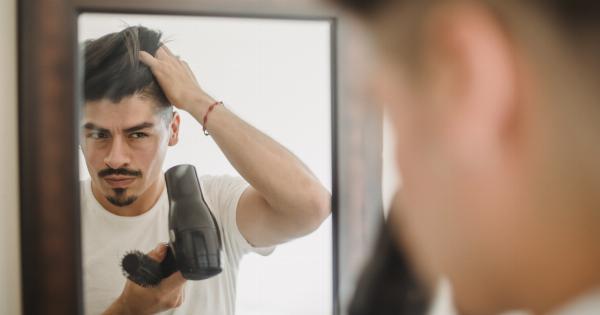We’ve all experienced it – that dreaded moment when you step out of the shower only to find that your once smooth and silky hair has transformed into a frizzy, tangled mess.
But why does this happen? What is the science behind post-shower hair troubles?.
The Structure of Hair
To understand why our hair misbehaves after a shower, it’s essential to first grasp the structure of our tresses. Hair is made up of three layers: the cuticle, the cortex, and the medulla.
The outermost layer, the cuticle, plays a vital role in determining the texture and appearance of our hair.
The Role of Water
When we shower, water penetrates the cuticle layer of our hair. This causes the cuticle to swell as it absorbs moisture. As a result, the hair shaft becomes more porous, allowing water to enter the cortex of the hair strand.
The cortex is responsible for giving hair its strength, elasticity, and color.
Friction and Damage
When wet, our hair is more vulnerable to damage. Brushing or combing wet hair vigorously can cause friction between the strands, leading to breakage and split ends.
Additionally, the increased porosity of wet hair makes it more prone to damage from heat styling tools, such as blow dryers or straighteners.
The Effects of Humidity
Humidity plays a significant role in post-shower hair troubles. When the humidity levels in the air are high, our hair absorbs moisture from the environment, causing the hair shaft to swell further.
This results in frizz and flyaways, as the increased size of the hair strands disrupts the smoothness of the hair cuticle.
Loss of Natural Oils
Another factor contributing to post-shower hair troubles is the loss of natural oils. The water and shampoo used during a shower can strip the hair of its natural oils, leaving it dry and prone to damage.
This lack of hydration can make the hair more susceptible to frizz and tangling.
Preventing Post-Shower Hair Troubles
While it may be challenging to completely eliminate post-shower hair troubles, there are several steps you can take to minimize the damage and maintain healthier-looking hair:.
1. Use a Wide-Toothed Comb
Instead of using a brush, opt for a wide-toothed comb to gently detangle wet hair. This reduces the risk of breakage and minimizes the friction between strands.
2. Apply Leave-In Conditioner
After showering, apply a leave-in conditioner to provide your hair with some much-needed moisture and protection. This will help seal the cuticle, reducing frizz and leaving your hair more manageable.
3. Avoid Heat Styling
Whenever possible, allow your hair to air dry naturally to avoid further damage from heat styling tools. If you must use a blow dryer or straightener, apply a heat protectant product beforehand to minimize the negative impact.
4. Use Anti-Frizz Products
Invest in high-quality anti-frizz products such as serums or oils specifically formulated to tame frizz and flyaways. These products work by coating the hair shaft, providing a protective barrier against humidity.
5. Sleep on a Silk Pillowcase
Switching your cotton pillowcase for a silk one can make a significant difference in reducing post-shower hair troubles. Silk causes less friction against the hair, minimizing tangles and frizz while you sleep.
6. Limit Washings
Washing your hair every day can strip away its natural oils, leading to dryness and increased vulnerability to damage. Try to extend the time between washes to allow your hair to reap the benefits of its natural oils.
Conclusion
While post-shower hair troubles can be frustrating, understanding the science behind these issues can help us prevent and manage them more effectively.
By being mindful of our hair’s structure and taking the necessary steps to protect and nourish it, we can achieve healthier and more manageable hair even after stepping out of the shower.




























